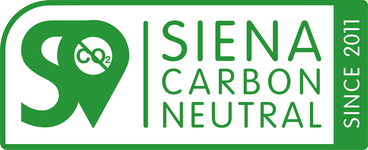
In 2001, with the economic support of the Fondazione Monte dei Paschi (FMPS), the Siena Provincial Administration launched the SPIn-Eco research project. In the course of the project (2001-2005), various sustainability indicators (e.g. Emergy, Ecological Footprint and Greenhouse Gas Inventory) were applied at province scale.
The results of the Greenhouse Gas Inventory were strongly correlated with other indicators, such as the Ecological Footprint and non-renewable Emergy, and showed a promising situation: about 60% of CO2 was captured by local ecosystems.
Since 2008, the REGES project (Riduzione delle Emissioni di Gas a Effetto Serra) has produced a historical series of ISO 14064-1-validated Greenhouse Gas Inventories for the purpose of developing strategic action to mitigate climate change.
In this context, the political programme of Siena Provincial Administration included achieving carbon neutrality by 2015 (“Siena Carbon Free 2015”).
The REGES project, funded by FMPS, combined three measures:
1) analysis and monitoring of greenhouse gas emissions and sequestration (Ecodynamics Group, University of Siena);
2) control and certification (RINA Services S.p.A.);
3) environmental policy (Siena Provincial Administration).
The ambitious goal of carbon neutrality was achieved in 2011, 4 years sooner than planned.

Features

The province has low population density and low industrial activity, combined with a vast area of forest (about 45% of the area of the province). Its economy is mainly agriculture. Another feature of the area is the exploitation of geothermal fluids with production of electricity in excess of provincial demand.

There is currently no internationally agreed standard for accounting CO2 emissions from geothermal power stations. The IPCC Guidelines 2006 do not explain how geothermal emissions should be estimated. These emissions can be seen as belonging to cycles that include volcanoes and the like, which may erupt suddenly or emit continuously. Since these emissions are natural processes, the CO2 produced by geothermal power stations is compensated by a reduction in natural emissions from geothermal sites.

Sequestration of CO2 by forests in Siena province is accounted by a prudential approach. Estimates are 14% lower on average than forest sequestration calculated by CNR-Ibimet in the “Rapporto sullo Stato dell’Ambiente della Provincia di Siena” (2010).


